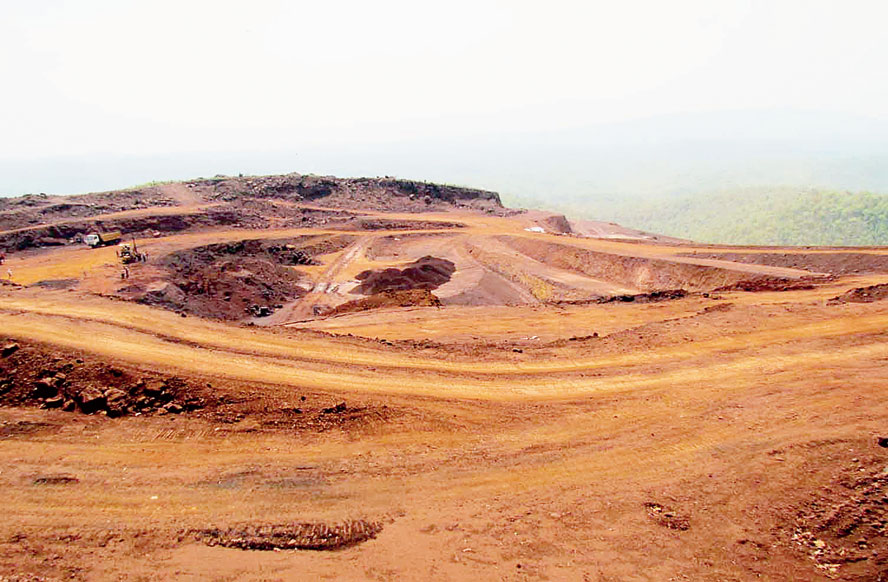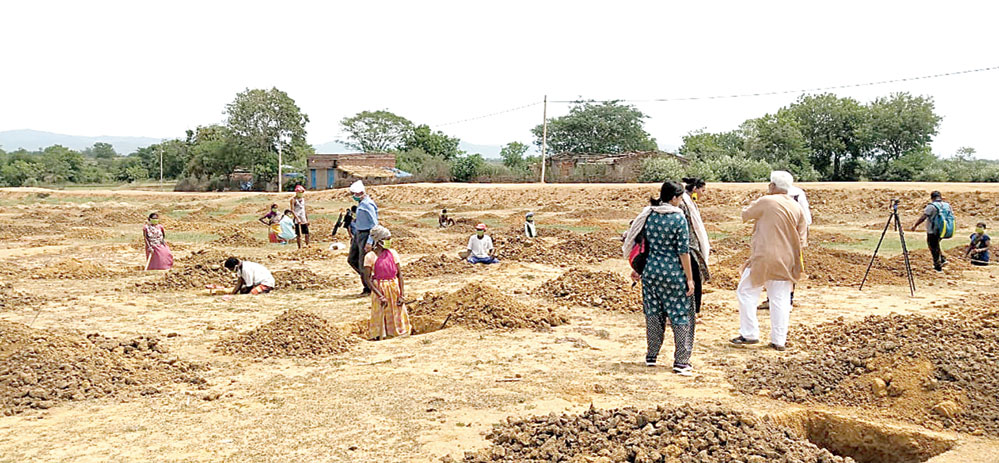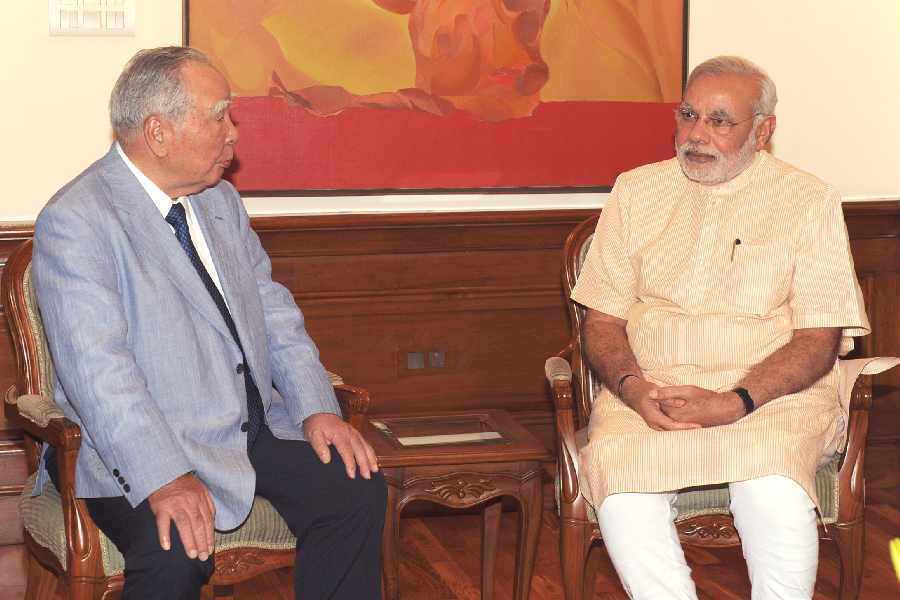
Iron ore mines at Kiriburu in West Singhbhum. Picture by Bhola Prasad
“The horticulture wing in the district has conducted research on the soil of the region and will be growing mostly mango, jackfruit, custard apple, guava, lemon and orange apart from timber. We have set a target of planting over six lakh fruit-bearing trees during the monsoon and the beneficiaries will be given the responsibility of nurturing and protecting it,” said Ranjan, an alumnus of BIT Mesra Ranchi.
According to horticulture officials, each of the trees will start bearing fruits in the next five years or so, providing livelihood for the villagers and increasing green cover of the mineral-rich region. Plans are ready to provide market linkage for the farmers when the trees start yielding fruits.
“We have drawn up a list of NGOs under the umbrella of NGO Pradan for providing market linkage to the farmers in selling their products not only in neighbouring districts but also in neighbouring states and other parts of India. As it is, jackfruit from Anandpur and Porahat blocks of West Singhbhum are taken by traders and sold in Bengal and Odisha at high rates,” Ranjan said.
“We want to provide a steady source of income for the farmers and workers in their own villages so that they do not need to migrate to another state in future.
Two NGOs would be adopting one block,” the IAS officer added. Himachal Pradesh, which holds the tag of being the fruit bowl of the country, has plantations in over two lakh hectares.
“Himachal Pradesh produces mainly sub-tropical and dry temperate fruits like apples, apricot, mango, litchis, lemon and berries. On average, we produce between four and five lakh tonnes of fruits annually,” said R.P. Sankhyan, deputy director, horticulture, Himachal Pradesh.
The land that coughs up iron ore is striking while the iron is hot, not to forge more steel but to harvest something more succulent with the help of returned migrant workers.
West Singhbhum, the southern Jharkhand district which contributes 24 per cent of the country’s mined iron ore, has started work with the aim of transforming itself into fruit-producing hub of the region.
The initiative will make use of the services of over 22,000 migrant labourers who have returned from other states to the district till June 3 in the wake of the Covid-19 pandemic.
“The database of the migrants who had returned till June 3 is complete. We are looking at unskilled workers to transform our district into a fruit-producing hub. We have identified over 5,000 acres (both private and government-owned) spread across 18 blocks of the districts for the project,” West Singhbhum deputy development commissioner Aditya Ranjan said.
Over 29,000 migrant workers are going to be given work. “Under the Birsa Munda Harit Gram Yojana, we would be engaging over 29,000 unskilled workers for planting mostly fruit-bearing trees. The government will be bearing the expenditure on seeds, fertilisers and fencing of the plantation area. In addition, the workers will be paid for digging and plantation work in line with the person days under the MGNREGA scheme (Rs 194 per day). We will transfer nearly Rs 60 lakh in their accounts daily,” Ranjan added.
At the moment, West Singhbhum has mining leases for steel producers like Steel Authority of India Limited at Chiria and Tata Steel at Noamundi. Environmentalists have been raising red flags against the depletion of forest cover, especially in Saranda, which has Asia’s largest sal reserves, because of mining.
According to records available with the district rural development authority in West Singhbhum, digging for the plantation drive has already begun in 4,000 acres, using the services of over 20,000 workers who have completed their quarantine period.











